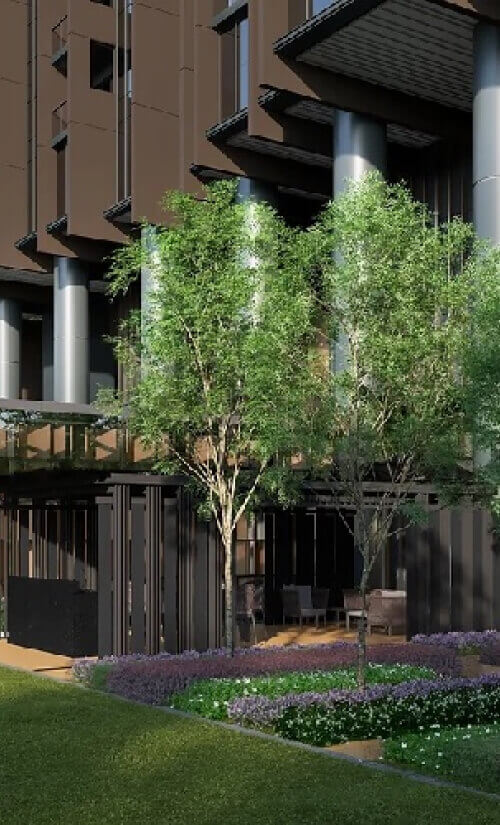PropNex Picks
|July 22,2025Decoding Developer Moves Through GLS Trends
Share this article:

The Government Land Sales (GLS) have been turning heads recently. With a total of 17,705 private housing units (including ECs) planned for the year, which is the highest since 2014, the government is making it clear that they expect private residential demand to stay strong. But developers? Their response has been kind of cautious, even hesitant. So, what gives?
Let's start with the facts. The government raised the total private housing supply by 8.2%, from 8,505 homes in 1H 2025 to 9,200 homes in 2H 2025. The confirmed list for 2H 2025 features 10 sites (including two EC plots) that can yield around 4,725 units (including 990 EC units), which is actually down by 6.1% from the 5,030 units in the confirmed list of 1H 2025. However, under the reserved list, the government has 12 more sites (inclusive of six residential plots, a commercial site, three white sites, and two hotel sites) to sell should developers want them.
Perhaps the government is trying to meet the demand here. But beyond that, increasing supply can also moderate price increases and stabilise the market in the long run. Kind of a pre-emptive measure before the market overheats. In fact, the government often continues pushing for home development even during economic downturns as a way to stimulate the economy. This helps sustain the construction sector, preserves jobs across related industries, and supports domestic demand through the multiplier effect. It also signals long-term confidence in the housing market, even during uncertain times.
Some GLS sites attract plenty of attention. For example, in March 2025, a GLS site at Bayshore Road received eight bids and was sold at $1,388 per square foot per plot ratio (psf ppr), marking the highest ever land price for a purely residential site in the Outside Central Region (OCR), excluding ECs, white sites, and mixed-use developments.
But others? Not so much. Sites like those in Media Circle have struggled to draw interest, with some closing without a single bid.
We also have cases like the Jurong Lake District tender, which ended up being rejected because the bids were too low.
But why would the government reject the low bid when they're supposed to keep land prices affordable? Perhaps we can talk more about this in another article. But what is clear is that developers don't want to bite more than they can chew here.
So, what's behind this cautious approach? Here are some reasons developers may be holding back:
- Site-specific limitations
Developers may avoid certain sites because of the sites themselves. For example, the Media Circle site has limited accessibility and not enough family-living vibes. Developers take notes of these site attributes. Because if there's poor MRT access, not enough nearby amenities, or an unattractive neighbourhood profile, they're the ones who will face the consequences when buyers aren't biting.
If they can't get enough people to purchase a unit, they're not just missing their sales target, they also risk missing their ABSD deadlines. Under current rules, developers must pay a 35% ABSD (on top of the non-remittable 5%) which can only be remitted if they sell all units in the project within 5 years of acquiring the land. If sales are slow, they would have to offer discounts or other incentives just to avoid paying a penalty. This eats into their margins and even creates losses.
- Rental prospects
If the rental prospects aren't looking good, it would make the project less appealing to investors, who usually make up a good chunk of buyers. That's why developers have to factor this in before they make a bid.
In recent months, many media and tech sectors have seen significant layoffs, from big tech firms like Meta to local companies like SPH Media. With fewer well-paid tenants and some companies scaling back on office space, rental demand in certain areas could weaken. This makes developers extra cautious, especially when the project's location relies heavily on a strong tenant pool from these industries.
- Weak launch performance in nearby projects
When nearby projects do poorly, it discourages other developers. For example, the underwhelming sales at Bloomsbury Residences, where only 25% of the units were sold. It was well below the average 58% sell-through rate seen in major launches since interest rates began softening in late 2024. When something like this happens, it's a big red flag. No one wants to be the next cautionary tale. - Fewer HDB upgraders in certain areas
Some GLS sites are located in zones with fewer potential HDB upgraders, who are traditionally a strong demand base for new mass-market private housing. Without a ready pool of buyers in the surrounding estates, developers are understandably hesitant to commit large sums upfront, especially when they don't know if the market will absorb the units later. - Global headwinds and economic caution
The recent US tariff announcements and ongoing trade tensions have cast a shadow over global economic growth. And with GDP growth already slowing down, developers have to be extra cautious when they place their bids in case we enter a recession. So, with everything that is going on, the mood is understandably wary.
- Strategic reasons
Rather than bidding for every other tender, some developers are purposely... waiting.
Yup, developers may wait for the next confirmed list to see if there's a more compelling choice, perhaps a better location or connectivity, especially if they are in no rush to start a new project. It's all part of their strategy.
Well, for one thing, you can expect fewer new launches, at least for now. As developers remain cautious and selective with land acquisition, it's likely we'll see fewer new launches over the next year or so. And when supply gets tighter, prices tend to go up.
On top of that, fewer new launches mean more buyers may start looking into the resale market. And that can drive up resale prices too, especially in mature estates or city-fringe areas with better connectivity and amenities.
But beyond choosing between a new launch or resale, it's important to understand market signals such as leading and lagging indicators, so you can anticipate where the market is headed, not just where it's been.
You should also know your mid to long-term game plan. Whether you're investing for capital appreciation, rental income, or future upgrading. Knowing when to enter and eventually exit the market is just as important as what you buy.
When developers are nervous, it's a sign that there are good opportunities for homebuyers, upgraders and investors. That's why it's worth keeping a close eye on what developers do next. Here are some things to look out for:
- GLS tender results
If bids remain low or sites go unclaimed, developers are still cautious. But if more sites start drawing competitive offers, that's a sign confidence is returning and prices may firm up. - EC launches
Fast-moving ECs means upgrader demand is back. Slow take-up means affordability concerns are still dampening demand. - Developer incentives
When developers are under pressure, you'll see more discounts, rebates, or perks. This is a good opportunity for you to enter the market at a good price. - Resale trends
Rising resale activity means more buyers are turning away from pricey launches. It can be a signal that prices will go up.
If you want to get a deeper understanding of how these external factors affect your property journey, do join us at the upcoming Property Wealth System Masterclass. Hear directly from industry experts and get practical strategies that could help you gain clarity and make informed decisions ahead.
Views expressed in this article belong to the writer(s) and do not reflect PropNex's position. No part of this content may be reproduced, distributed, transmitted, displayed, published, or broadcast in any form or by any means without the prior written consent of PropNex.
For permission to use, reproduce, or distribute any content, please contact the Corporate Communications department. PropNex reserves the right to modify or update this disclaimer at any time without prior notice.






